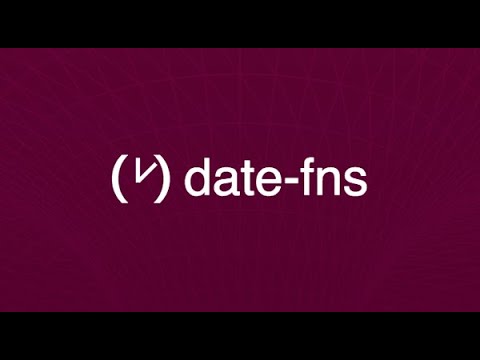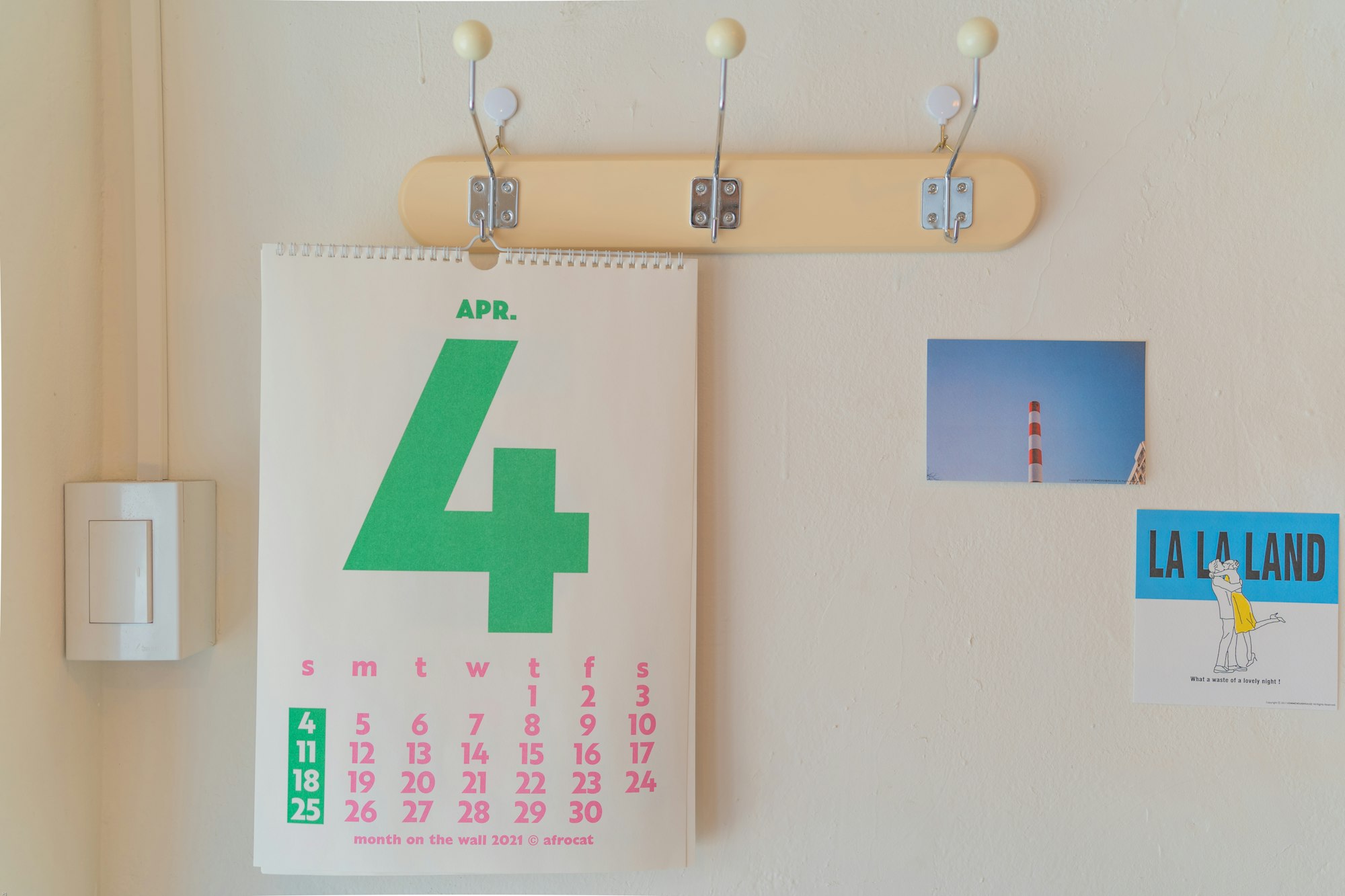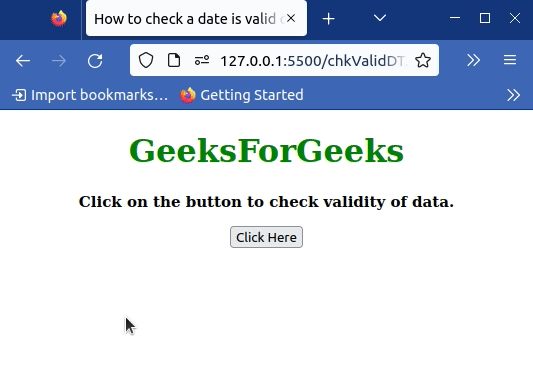Date Fns Is Valid
When it comes to working with dates in JavaScript, developers often face challenges due to the language’s limited built-in functionality. This is where date-fns comes to the rescue. Date-fns is a lightweight and modular library that provides a wide range of date manipulation and formatting functions. In this article, we will take an in-depth look at date-fns, its importance, the process of validating dates using date-fns, how it handles invalid dates, common issues, and best practices for working with date validation.
## What Are date-fns?
Date-fns is a JavaScript library that offers a comprehensive set of functions for manipulating, formatting, and parsing dates. It provides a modular approach, which means you can cherry-pick the specific functions you need for your project, keeping your bundle size small. This makes date-fns an excellent choice for both frontend and backend applications.
The library is considered a replacement for Moment.js, a popular date manipulation library. However, date-fns takes a different approach by focusing on immutability and pure functions. It aims to be more modern, lightweight, and efficient.
## Why Is date-fns Important?
Date manipulation can be a complex task, especially when dealing with different time zones, locales, and formatting requirements. JavaScript’s built-in `Date` object has limited capabilities, making it challenging to perform various operations smoothly. Date-fns provides a rich set of functions that simplify these tasks and make date manipulation more straightforward and less error-prone.
Here are a few reasons why date-fns is important:
### 1. Comprehensive Functionality:
The date-fns library includes a vast range of functions for all your date manipulation needs. Whether you want to add or subtract days, format a date in a specific way, compare dates, or calculate differences, date-fns has got you covered.
### 2. Modularity:
Date-fns is designed to be modular, allowing you to import only the specific functions you need. This helps reduce the overall bundle size of your application, resulting in improved performance.
### 3. Immutable and Pure Functions:
Date-fns follows the principle of immutability, meaning that the library’s functions do not modify the original date but return a new date object instead. This eliminates potential side effects and makes the code more predictable and easier to reason about.
### 4. Extensibility:
Date-fns provides an extensible plugin system that allows you to add custom functionality or integrate with other libraries seamlessly. This flexibility ensures that date-fns can adapt to your specific project requirements.
### 5. Active Community:
Date-fns has gained popularity over time and has a vibrant community of developers. This means you can find plenty of resources, documentation, and support from the community when working with the library.
## How to Validate a Date Using date-fns
Validating dates is a crucial step in many applications, ensuring that the user inputs a date in the correct format and within a valid range. Date-fns offers a simple method to validate dates using the `isValid` function.
To validate a date with date-fns, you need to provide a date object to the `isValid` function, which will return `true` if the date is valid and `false` otherwise.
Here’s an example of how to validate a date using date-fns:
“`javascript
import { isValid } from ‘date-fns’;
const date = new Date(‘2022-01-01’);
const isValidDate = isValid(date);
console.log(isValidDate); // Output: true
“`
In the above example, we first create a new `Date` object representing January 1, 2022. We then pass this date object to the `isValid` function, which returns `true` since it is a valid date.
## How Does date-fns Handle Invalid Dates?
Date-fns follows the same rules as JavaScript’s built-in `Date` object for handling invalid dates. If you provide an invalid date to any date-fns function, it will return an `Invalid Date` object.
For example, let’s say you pass an invalid date string to the `format` function:
“`javascript
import { format } from ‘date-fns’;
const invalidDate = format(‘not-a-date’, ‘yyyy-MM-dd’);
console.log(invalidDate); // Output: Invalid Date
“`
In the above example, the `format` function receives an invalid date string, resulting in an `Invalid Date` object being returned.
It’s important to be cautious when handling and validating dates to ensure that you handle such scenarios gracefully and provide appropriate feedback to the user.
## Common Issues When Validating Dates With date-fns
While date-fns is a powerful library, there are a few common issues that developers may encounter when validating dates:
### 1. String Parsing:
When parsing dates from string formats, be aware of the date format expected by the `parse` function. Make sure the input matches the expected format; otherwise, the validation may fail or return unexpected results.
### 2. Time Zones:
When working with dates that involve time zones, be mindful of the differences between the local time zone and the UTC time zone. Ensure that you handle time zone conversions correctly to avoid inconsistencies.
### 3. Leap Year:
Date validation should also account for leap years, ensuring that February 29 is a valid date in leap years. Make sure you take this into consideration when performing date calculations or validations.
## Best Practices for Working with Date Validation Using date-fns
To ensure accurate and reliable date validation using date-fns, consider the following best practices:
1. **Normalize Input**: If you allow users to input dates manually, normalize the input format to a standard format before validating it. This helps avoid confusion and ensures consistency.
2. **Handle Time Zones**: When working with dates involving time zones, ensure that you convert the dates to a consistent time zone or handle the time zone appropriately during validation to prevent unintended errors.
3. **Use Immutable Dates**: Date-fns follows an immutable approach, which means it returns new date objects instead of modifying the originals. Embrace this immutability and avoid modifying the original dates to prevent side effects.
4. **Thorough Testing**: Test your date validation thoroughly with various scenarios, including edge cases, different input formats, and time zones. This helps uncover any potential issues and ensures the accuracy and reliability of your date validation.
## Conclusion
In conclusion, date-fns is a powerful and versatile JavaScript library for working with dates. With its comprehensive functionality, modularity, immutability, and active community support, it has become a popular choice for date manipulation tasks. Whether you need to validate dates, perform calculations, format dates, or handle time zones, date-fns provides a wide range of functions to simplify these tasks.
By following best practices and considering common issues, you can leverage date-fns effectively for accurate and reliable date validation in your applications.
—
## FAQs
**Q: What is date-fns-tz?**
date-fns-tz is an extension for date-fns that provides additional functionality for handling time zones. It offers functions to convert dates between different time zones, calculate time zone offsets, and format dates with time zone information.
**Q: How do I use date-fns parse and format functions?**
The `parse` function in date-fns is used to parse a string representation of a date into a Date object. On the other hand, the `format` function is used to format a given Date object into a string representation based on a specified format string. Example usages of both functions are provided in the code examples throughout this article.
**Q: What is date-fns/locale?**
date-fns/locale is a module in date-fns that provides localization support for formatting dates. It offers various locale-specific formatting options, such as different date formats or month and weekday names.
**Q: What is date-fns npm?**
date-fns is available as an npm package, allowing you to easily install and manage the library in your JavaScript projects. You can install date-fns by running the command `npm install date-fns`.
**Q: What is Date-fns/locale/vi?**
Date-fns/locale/vi is the Vietnamese locale module provided by date-fns. It enables you to format dates according to Vietnamese conventions, such as Vietnamese date and time formats, month and weekday names in Vietnamese, and other localization-specific settings.
**Q: What is parseISO in date-fns?**
`parseISO` is a function provided by date-fns that parses a string representation of a date in ISO 8601 format (e.g., “2022-01-01”) into a Date object. It makes it easier to parse ISO-formatted dates without having to manually specify the parsing format.
**Q: What is date-fns cdndate fns?**
It appears that “date-fns cdndate fns” is a typo or an incorrect term. The correct usage is “date-fns” as the library name, and “CDN” refers to using a Content Delivery Network to serve date-fns from a remote server, providing faster access to the library.
Working With Javascript Dates? Yeah, Just Use Date-Fns…
How To Use Date-Fns To Format Date?
Managing dates and handling date formatting can be a challenging task for many developers. However, with the right tools and libraries, this task can be made significantly easier. One such tool is date-fns, a lightweight JavaScript library that provides numerous utility functions to manipulate, parse, and format dates.
In this article, we will explore the date-fns library and how to use it effectively to format dates according to our specific requirements. We will cover various formatting options, such as displaying the date in a specific locale, customizing the output format, and handling relative time formats. So let’s dive in.
Getting Started
Firstly, we need to install the date-fns library using npm or yarn:
“`
npm install date-fns
“`
Once we have installed the library, we can simply import it into our project:
“`javascript
import { format } from ‘date-fns’;
“`
or
“`javascript
const { format } = require(‘date-fns’);
“`
Basic Usage
To start formatting a date with date-fns, we just need to call the `format` function and pass the date and the desired format string.
“`javascript
const formattedDate = format(new Date(), ‘yyyy-MM-dd’);
console.log(formattedDate);
// Output: 2022-01-01
“`
The first argument is the date object or a valid date string, and the second argument is the format string. In the above example, we used ‘yyyy-MM-dd’ to format the date in the format ‘year-month-day’.
Formatting Options
The date-fns library provides a wide range of formatting options to cater to various needs. Here are some commonly used format tokens:
– `yyyy` – 4-digit year
– `yy` – 2-digit year
– `MM` – 2-digit month (01, 02, …, 12)
– `MMM` – Month abbreviation (Jan, Feb, …, Dec)
– `MMMo` – Month abbreviation with ordinal (1st, 2nd, …, 12th)
– `DD` – 2-digit day of the month (01, 02, …, 31)
– `d` – Day of the week (0, 1, …, 6)
– `E` – Short day name (Sun, Mon, …, Sat)
– `EEEE` – Full day name (Sunday, Monday, …, Saturday)
– `HH` – 2-digit hour (00, 01, …, 23)
– `mm` – 2-digit minute (00, 01, …, 59)
– `ss` – 2-digit second (00, 01, …, 59)
You can use any combination of these format tokens in your format string for the desired output format.
Locale-specific Formatting
The date-fns library also supports localization, allowing us to format dates according to different locales. To achieve this, we need to import the corresponding locale from date-fns:
“`javascript
import { format } from ‘date-fns’;
import { ru } from ‘date-fns/locale’;
“`
Now, we can pass the locale as an additional argument to the `format` function:
“`javascript
const formattedDate = format(new Date(), ‘PP’, { locale: ru });
console.log(formattedDate);
// Output: 01 янв. 2022 г.
“`
In the above example, we imported the Russian locale and used the ‘PP’ format token to format the date in the short format defined by the locale.
Relative Time Formatting
Another useful feature provided by date-fns is the ability to format dates as relative times, such as “2 minutes ago” or “in 5 days.” This can be accomplished using the `formatDistance` function.
“`javascript
import { formatDistance } from ‘date-fns’;
const relativeTime = formatDistance(new Date(), new Date(2021, 11, 30), { addSuffix: true });
console.log(relativeTime);
// Output: 1 day ago
“`
In the above example, we used the `formatDistance` function to calculate the difference between two dates and format it as a relative time. The `addSuffix` option adds the “ago” or “in” prefix to the relative time output.
FAQs
Q: Can I customize the format string to include additional text or symbols?
A: Yes, you can include any additional text or symbols within the format string. For example, ‘yyyy/MM/dd [at] HH:mm’ will output ‘2022/01/01 at 12:34’.
Q: How do I format the date in a different time zone?
A: date-fns focuses on date manipulation and formatting rather than time zone conversion. To format the date in a different time zone, you would need to use additional libraries such as moment-timezone or rely on built-in JavaScript Date methods.
Q: Can I parse a date string using date-fns?
A: Yes, date-fns provides a `parse` function to parse date strings into valid Date objects. You can use it as follows: `const date = parse(‘2022-01-01’, ‘yyyy-MM-dd’, new Date());`
Conclusion
The date-fns library simplifies date formatting in JavaScript, providing various options to customize the output to meet our needs. We learned how to format dates using different format tokens, how to apply locale-specific formatting, and how to present dates as relative times. By understanding these concepts and utilizing the date-fns library, we can efficiently handle date formatting in our projects and deliver better user experiences.
How To Check If Date Is Valid In Node Js?
Node.js is an open-source, cross-platform JavaScript runtime environment that allows developers to execute JavaScript code outside a web browser. It provides various built-in modules that simplify and enhance the development process. One common task when working with dates in Node.js is validating whether a date is valid or not. In this article, we will explore different approaches to accomplish this.
There are several methods available in Node.js to validate dates. Let’s take a look at some of the commonly used ones.
1. Using the Date Object:
The Date object is built into JavaScript, and Node.js provides access to this object out of the box. The simplest way to check if a date is valid is by creating a new `Date` object and checking if it represents a valid date.
“`javascript
const isValidDate = (dateString) => {
const date = new Date(dateString);
return !isNaN(date);
}
“`
In this approach, the `Date` constructor attempts to parse the input `dateString` and create a new date object. If the resulting date is `NaN`, it means the input was invalid.
2. Using a Regular Expression:
Another approach to validate dates is by using regular expressions to match against valid date patterns. Although this approach may be more error-prone and less accurate than the previous one, it can be useful in scenarios where the date format is known and fixed.
“`javascript
const isValidDate = (dateString) => {
const regex = /^(0[1-9]|1[0-2])\/(0[1-9]|[12][0-9]|3[01])\/([0-9]{4})$/;
return regex.test(dateString);
}
“`
This regular expression checks if the `dateString` matches the format `MM/DD/YYYY`, where `MM` represents the month, `DD` represents the day, and `YYYY` represents the four-digit year.
3. Using Third-Party Libraries:
Node.js has a vast ecosystem of third-party libraries that extend its capabilities. Some popular libraries, such as moment.js and date-fns, provide advanced date manipulation and validation functionalities.
To use moment.js, you will need to install it by running `npm install moment`. Here’s an example of how to validate a date using moment.js:
“`javascript
const moment = require(‘moment’);
const isValidDate = (dateString) => {
return moment(dateString, ‘MM/DD/YYYY’, true).isValid();
}
“`
In this approach, the `moment` function parses the `dateString` using the provided format `MM/DD/YYYY`. The third parameter `true` indicates strict parsing, which requires the input to match the format exactly.
To use date-fns, you will need to install it by running `npm install date-fns`. Here’s how you can validate a date with date-fns:
“`javascript
const { isValid } = require(‘date-fns’);
const isValidDate = (dateString) => {
const date = new Date(dateString);
return isValid(date);
}
“`
In this example, the `isValid` function from date-fns checks if the given `date` is a valid date.
FAQs (Frequently Asked Questions):
Q1. What date formats can be validated using these approaches?
These approaches can validate dates in various formats, depending on the method used. The first two approaches are more flexible and can handle a wide range of date formats, whereas the third-party libraries may require you to specify the expected format explicitly.
Q2. Are the approaches case-sensitive when validating date formats?
Yes, the regular expression approach and some third-party libraries, such as moment.js, are case-sensitive when validating date formats. Make sure to match the case of the letters in the format string if you want it to be strictly enforced.
Q3. How can I handle time zones when validating dates?
The approaches mentioned in this article focus on validating the date portion only. If you also need to handle time zones, you may need to consider implementing additional logic or using more advanced third-party libraries that provide time zone handling capabilities.
Q4. Are there any alternative methods to validate dates in Node.js?
Yes, there are alternative methods to validate dates in Node.js. For instance, you can use the `isNaN` function to check if a date is valid. However, this method may be less accurate and more error-prone compared to the approaches described in this article.
In conclusion, validating dates in Node.js can be done using built-in methods like the Date object or regular expressions, as well as third-party libraries like moment.js and date-fns. The choice of method depends on the specific requirements of your project. By using the information provided in this article, you should be able to confidently check if a date is valid in your Node.js applications.
Keywords searched by users: date fns is valid Date-fns-tz, date-fns parse, date-fns format, Date-fns/locale, date-fns npm, Date-fns/locale/vi, parseISO date-fns, date-fns cdn
Categories: Top 48 Date Fns Is Valid
See more here: nhanvietluanvan.com
Date-Fns-Tz
Introduction:
Handling time zones accurately in JavaScript has always been a challenge. The default JavaScript Date object provides limited functionalities when it comes to working with time zones. However, thanks to the open-source library date-fns-tz, developers can now easily overcome these limitations and handle time zones with ease. In this article, we will explore the features and benefits of date-fns-tz, understand how it simplifies time zone handling, and address some frequently asked questions (FAQs) related to the library.
Understanding Time Zones:
Before delving into the specifics of date-fns-tz, let’s briefly understand the concept of time zones. Time zones are regions of the Earth that have the same standard time, usually differing from Coordinated Universal Time (UTC) by a specific offset. This offset is generally used to reflect the local time in relation to UTC. Handling time zones involves converting date and time values from one time zone to another, accounting for daylight saving time, and performing various calculations accurately.
Introducing date-fns-tz:
Date-fns-tz is an extension of the popular date-fns library, specifically designed to simplify time zone handling in JavaScript. It provides a wide range of functions and utilities that enable developers to effortlessly work with time zones, perform conversions, manipulate dates, and perform calculations accurately.
Key Features and Benefits of date-fns-tz:
1. Comprehensive Time Zone Support: date-fns-tz offers extensive time zone support, covering over 300 time zones worldwide. It provides a comprehensive database of time zone information, ensuring accuracy when working with different regions.
2. Time Zone Conversion: The library allows seamless conversion of date and time values between different time zones. It handles daylight saving time adjustments automatically, ensuring accurate results irrespective of the complexities involved.
3. Flexible Formatting and Localization: date-fns-tz includes a powerful formatter that enables developers to display dates in various formats according to specific time zones. It also supports localization, allowing the display of dates in different languages, enhancing the user experience.
4. Reliable Calculations: The library offers numerous functions for performing calculations with date and time values in different time zones. Whether it’s adding or subtracting durations, determining intervals, or comparing dates, date-fns-tz ensures precise results while considering the relevant time zone information.
5. Lightweight and Efficient: date-fns-tz is designed to be lightweight, making it a perfect choice for modern web applications. It offers a modular architecture, allowing developers to import only the required functionalities, minimizing the bundle size and optimizing performance.
6. Excellent Documentation and Community Support: The date-fns-tz library provides well-documented APIs and usage examples, making it easy for developers to get started. It also benefits from active community support and regular updates, ensuring reliable maintenance and continuous improvements.
FAQs about date-fns-tz:
Q1. Is date-fns-tz compatible with other JavaScript date and time libraries?
A1. Yes, date-fns-tz is designed to work seamlessly with other popular JavaScript date and time libraries. It can be used alongside Moment.js, Luxon, or native JavaScript Date objects.
Q2. Can date-fns-tz handle historical time zone changes?
A2. Yes, date-fns-tz incorporates historical time zone data, allowing accurate conversions and calculations even for dates that precede the current time zone rules.
Q3. Does date-fns-tz support daylight saving time?
A3. Absolutely, date-fns-tz excels at handling daylight saving time. It automatically adjusts for daylight saving time shifts, ensuring accurate conversions and calculations during DST transitions.
Q4. Is date-fns-tz suitable for both frontend and backend JavaScript applications?
A4. Yes, date-fns-tz is compatible with both frontend and backend JavaScript applications. It can be utilized in various frameworks like React, Angular, Node.js, and more.
Q5. How frequently is the time zone database updated?
A5. The date-fns-tz library relies on the IANA Time Zone Database for its time zone information. It is regularly updated by the IANA organization to include the latest changes and ensure accuracy.
Conclusion:
Date-fns-tz is an indispensable tool for JavaScript developers looking to handle time zones accurately and efficiently. With its comprehensive time zone support, seamless conversion capabilities, reliable calculations, and flexible formatting options, it simplifies the complexities of working with different time zones. By leveraging the lightweight and well-documented date-fns-tz library, developers can ensure their applications provide accurate and user-friendly date and time functionalities. So why struggle with time zone complexities when date-fns-tz simplifies the process for you? Start implementing time zone handling with ease using date-fns-tz today!
Date-Fns Parse
The world of JavaScript programming often revolves around managing dates and times efficiently. One popular library that developers turn to for this purpose is date-fns, which provides a wide range of date and time utilities. Among its many functions, date-fns parse stands out as a powerful tool for parsing and converting date strings into JavaScript Date objects. In this article, we will explore date-fns parse in depth, covering its features, usage, and common use cases.
Introduction to date-fns parse
The parse function in date-fns allows developers to transform a string representing a date and time into a JavaScript Date object. This conversion process is essential for performing operations on dates, such as comparison, formatting, and calculation. By utilizing the parse function, developers can easily parse various date and time formats without the need for writing complex parsing logic from scratch.
Usage and Syntax
To use the parse function, you first need to import it into your JavaScript project. The function has two mandatory parameters: the date string and the format string. The date string represents the date and time you want to parse, while the format string specifies the expected format of the input. Here is an example:
“`javascript
import { parse } from ‘date-fns’;
const dateString = ‘2022-05-30’;
const formatString = ‘yyyy-MM-dd’;
const parsedDate = parse(dateString, formatString);
console.log(parsedDate);
“`
In this example, we import the parse function from the date-fns library and then supply a date string (‘2022-05-30’) and format string (‘yyyy-MM-dd’). The expected format string adheres to a specific pattern, where ‘yyyy’ represents the four-digit year, ‘MM’ represents the two-digit month, and ‘dd’ represents the two-digit day. The parsedDate variable will contain a JavaScript Date object representing May 30, 2022.
Furthermore, date-fns parse supports additional format tokens besides the ones mentioned above. These tokens include ‘HH’ for hours in a 24-hour format, ‘mm’ for minutes, ‘ss’ for seconds, and ‘SSS’ for milliseconds. Additionally, you can utilize ‘a’ for representing AM/PM information. By combining these format tokens, you can parse date and time strings in various formats.
Common use cases
The versatility of date-fns parse makes it suitable for a wide range of use cases. Here are some examples:
1. User input validation: When designing a form that requires users to input a date, you can utilize date-fns parse to validate the input format. Comparing the parsed result to null or an invalid date allows you to provide instant feedback to users if the input is incorrect.
2. Data preprocessing: When receiving data from external sources or APIs, the date format might vary. By using date-fns parse with different format strings, you can normalize the dates into a consistent format before further manipulation.
3. Internationalization: Date and time formats differ across countries and regions. With date-fns parse, you can easily handle date strings in various localized formats by specifying the appropriate format string. This allows your application to support multiple languages and regions seamlessly.
FAQs
Q1. What happens if the date string does not match the format string?
If the date string does not match the expected format specified in the format string, the parse function will return null. This behavior provides a straightforward way to validate user input.
Q2. Can date-fns parse handle time zones?
No, the parse function does not handle time zone conversions. It simply converts the provided date string into a JavaScript Date object according to the supplied format. To handle time zones, you need to resort to other libraries or built-in JavaScript functions.
Q3. Are there any performance considerations when using date-fns parse?
While date-fns parse is optimized for performance, it is worth noting that parsing complex date strings might impact execution time. In scenarios with heavy date parsing requirements, it is advisable to benchmark and consider alternative approaches if necessary.
Q4. Can date-fns parse handle date strings in non-English languages?
Yes, date-fns parse supports a wide range of language locales. By setting the appropriate locale, you can parse date strings in different languages by supplying the corresponding format string. Make sure to consult the date-fns documentation for available locales and format strings.
Conclusion
Date-fns parse is a powerful tool for parsing and converting date strings into JavaScript Date objects. Its simplicity and versatility make it a popular choice among developers for handling date and time-related operations. By understanding the usage and capabilities of date-fns parse, developers can harness its potential to enhance their JavaScript projects. Whether you need to validate user input, preprocess data, or handle internationalization, date-fns parse provides a flexible and reliable solution for all your date parsing needs.
Images related to the topic date fns is valid

Found 7 images related to date fns is valid theme









Article link: date fns is valid.
Learn more about the topic date fns is valid.
- Receive a string and verify if it is a valid date with date-fns
- date-fns / is-valid – Bit Cloud
- Date-fns
- How to use the date-fns.isValid function in date-fns – Snyk
- Working with Dates Using the date-fns in JavaScript – Geekflare
- Validate a Date in JavaScript – Scaler Topics
- AngularJS angular.isDate() Function – GeeksforGeeks
- RangeError: invalid date – JavaScript – MDN Web Docs
- Working with Dates Using the date-fns in JavaScript – Geekflare
- Javascript Dates Manipulation with Date-fns – Section.io
- date-fns isValid TypeScript Examples – Program Creek
- date-fns-valid – Codesandbox
See more: https://nhanvietluanvan.com/luat-hoc